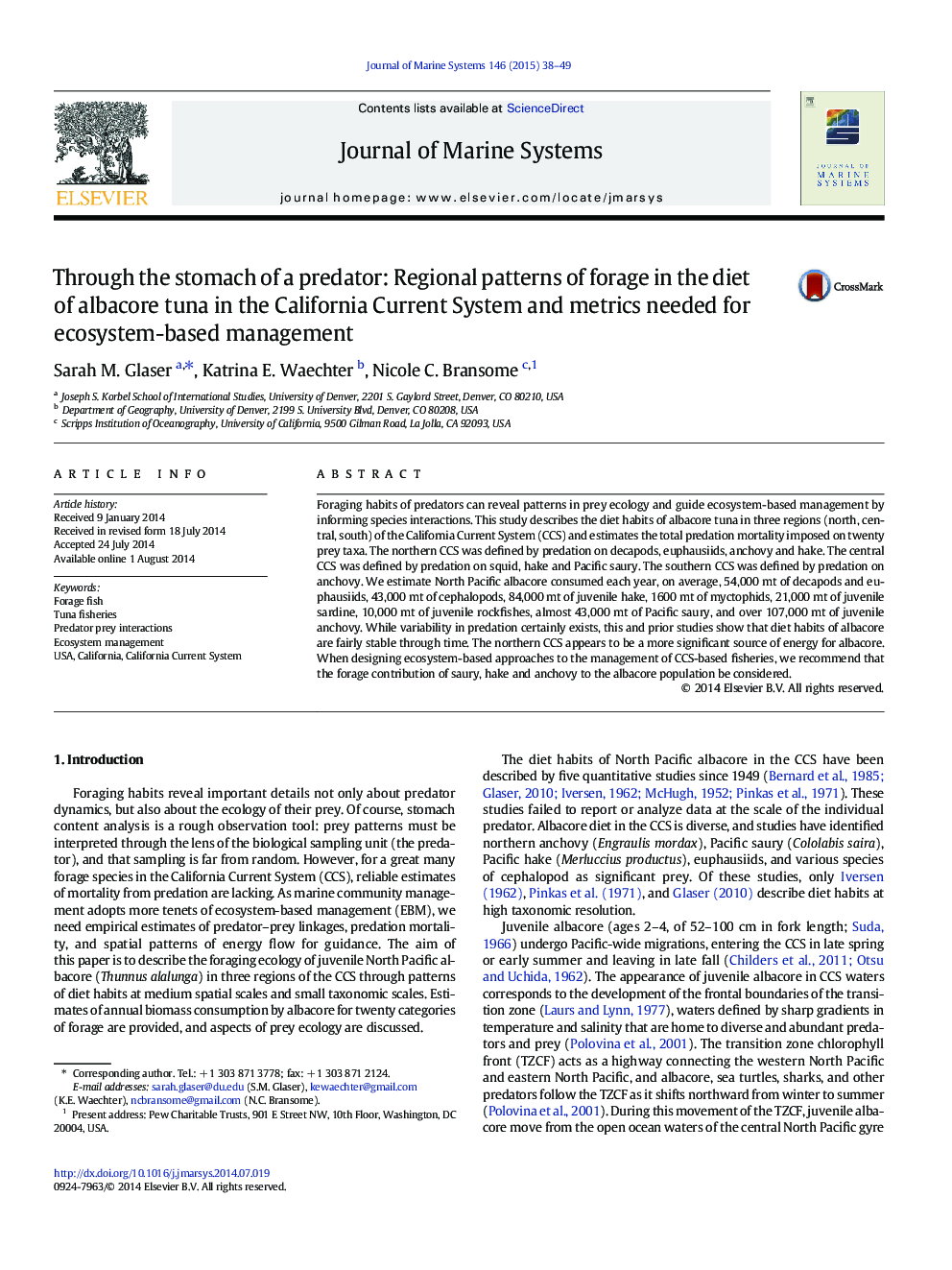| Article ID | Journal | Published Year | Pages | File Type |
|---|---|---|---|---|
| 4547979 | Journal of Marine Systems | 2015 | 12 Pages |
•We analyze spatial patterns of foraging by albacore in the California Current System.•We estimate average biomass consumed by albacore for 20 forage categories.•Regional differences in prey consumption and bioenergetics are present.•Ecosystem-based management of albacore should include anchovy, saury, and hake.
Foraging habits of predators can reveal patterns in prey ecology and guide ecosystem-based management by informing species interactions. This study describes the diet habits of albacore tuna in three regions (north, central, south) of the California Current System (CCS) and estimates the total predation mortality imposed on twenty prey taxa. The northern CCS was defined by predation on decapods, euphausiids, anchovy and hake. The central CCS was defined by predation on squid, hake and Pacific saury. The southern CCS was defined by predation on anchovy. We estimate North Pacific albacore consumed each year, on average, 54,000 mt of decapods and euphausiids, 43,000 mt of cephalopods, 84,000 mt of juvenile hake, 1600 mt of myctophids, 21,000 mt of juvenile sardine, 10,000 mt of juvenile rockfishes, almost 43,000 mt of Pacific saury, and over 107,000 mt of juvenile anchovy. While variability in predation certainly exists, this and prior studies show that diet habits of albacore are fairly stable through time. The northern CCS appears to be a more significant source of energy for albacore. When designing ecosystem-based approaches to the management of CCS-based fisheries, we recommend that the forage contribution of saury, hake and anchovy to the albacore population be considered.
